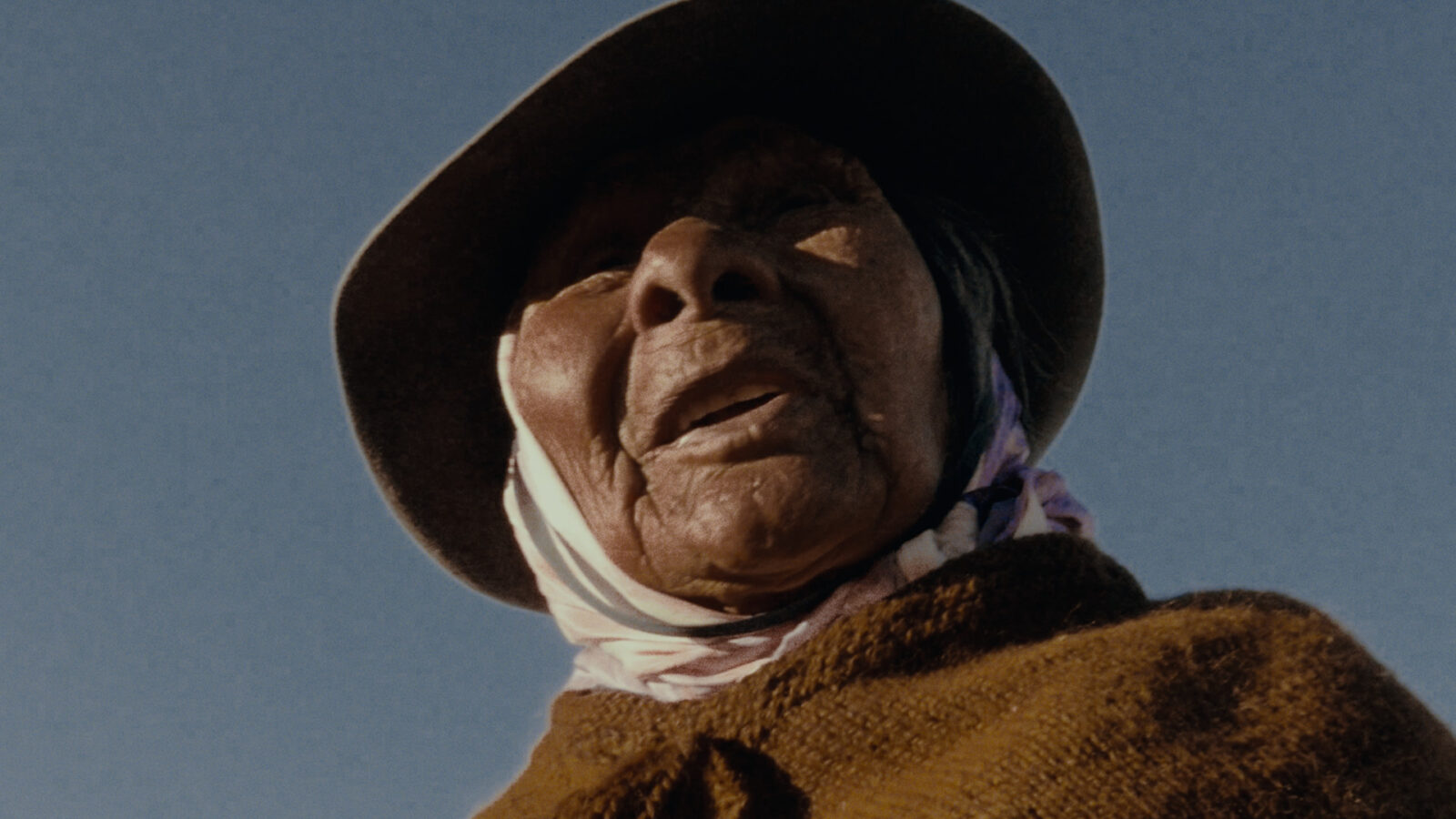As Lasting And Invisible As The Wind
Mundo
With an unhurried pace and poetic imagery, Ana Edwards paints a portrait of an Aymara shepherd who lives on the high plateau at the Chile-Bolivia border.

In the foreground, a river shimmers. In the background, snow-capped peaks stand, and white birds sail across a clear sky. A woman walks across the open landscape with a cane; her red-brown skin is wrinkled like the treeless mountain grooves. The sun lights up her shawl and bleaches the walls of her house. Lucas, her dog, runs after.
Mundo (World) is a portrait of the Aymara shepherd, Matilde Morales, who lives on the high plateau at the Chile-Bolivia border. With often speechless scenes, the filmmaker, Ana Edwards, depicts the protagonist’s solitary rhythm of life and intimate knowledge of the land. At dawn, Matilde lets out herds of sheep, alpacas, and llamas and, before sunset, calls them back. During her break, she drinks from an enamel cup and chews coca leaves. The camera’s stillness absorbs the passage of time. The portrait exudes a sense of intimacy, intersected with close-ups of Matilde’s face and movements. In one scene, the camera focuses on Matilde’s hands as she spins yarn. The wooden spindle turns as she pulls and stretches the alpaca wool. Her swift and skillful actions manifest the intuition developed from living in this place generation after generation.
The film, however, is far from a romanticisation of the indigenous shepherd’s life. In stark contrast to the sun-drenched footage of the protagonist’s daily life, the film begins eerily with a Bible passage, appearing in green over a black screen. As it cuts to black-and-white footage of a church service, an Aymara woman speaks to the camera: “My dad thought that a rock had the capacity to bless him, but that was a lie.” Her brazen assurance mirrors that of the preacher in the next cut, whose words permeate with unquestionable authority—“God doesn’t inhabit the mountain”—and antagonism—“T ‘make offerings to the Pachamama [Mother Earth] is to make offerings to the world, and who lives in the world? The Devil.”
The screen returns to total blackness, accompanied by sounds of river streams, cracking ice, static noise, and wind. A landscape emerges from the darkness with an inverted color scheme: the sky is black, and the mountains glow like bioluminescent algae. Evoking associations of nuclear apocalypse and mutation, the inversion of color reappears at the end of the film as Matilde’s voice recounts a nightmare. “‘I was [on] a high mountain! It was sulfur, green, like a lake. The Bible says that there will be a sulfur lagoon like that where all the sinners will go.”
With this juxtaposition of colours, Edwards brings together two narratives. In bright colours: the world is earthy and open, in which Matilde lives. In black, the world is unsettling and dangerous, which Matilde now believes. As Matilde speaks of the spiritual practices of her ancestors, her tone carries a sneer. “I got rid of the whole Mother Earth thing. After knowing the Word of God, I stopped doing those things.” Her dismissal of the spirituality from her heritage is heartbreaking. Not only has the gospel turned her against the Earth, but it has also split her body and mind into separate entities.
Throughout the film, the viewer bears witness to both the lived and the religious worlds. When Matilde goes to church—a small space with powder-blue walls and a few pews—the preacher raises his hands and says, “May the Lord strengthen you all! In such a distant place where you are all alone!” Here is a moment of revelation: the isolation experienced by Matilde and by her community has made them vulnerable to ideological invasion. In her portrayal of Matilde, Ana Edwards captures a snapshot of neocolonialism: the uprooting of ancestral knowledge and replacement with values that tame and assert control over the colonised.
A few images from the film linger after the ending credits: a dead alpaca’s head on the table, a total solar eclipse, and a boulder painted with the words “Cristo Vive” (“Christ Lives”). In these almost-still shots, Edwards conjures feelings of horror, wonder, and sorrow. The irony and symbolism of these images are left to the viewer’s imagination: has the Christian ideology killed the sacredness of alpaca, as believed by Andean cultures? Is Christ the new stone god, the latter of which was denounced as a ‘lie’ at the beginning of the film?
The preacher’s words resound—in the minds of the Aymara people and the viewers alike. They are blatant and outrageous, yet as lasting and invisible as the wind whipping dust on the high plain. When the Earth is demonised, where can we turn to? With an unhurried pace and poetic imagery, Mundo leads the viewer on an empathic journey of wonderment and critical reflection.




There are no comments yet, be the first!